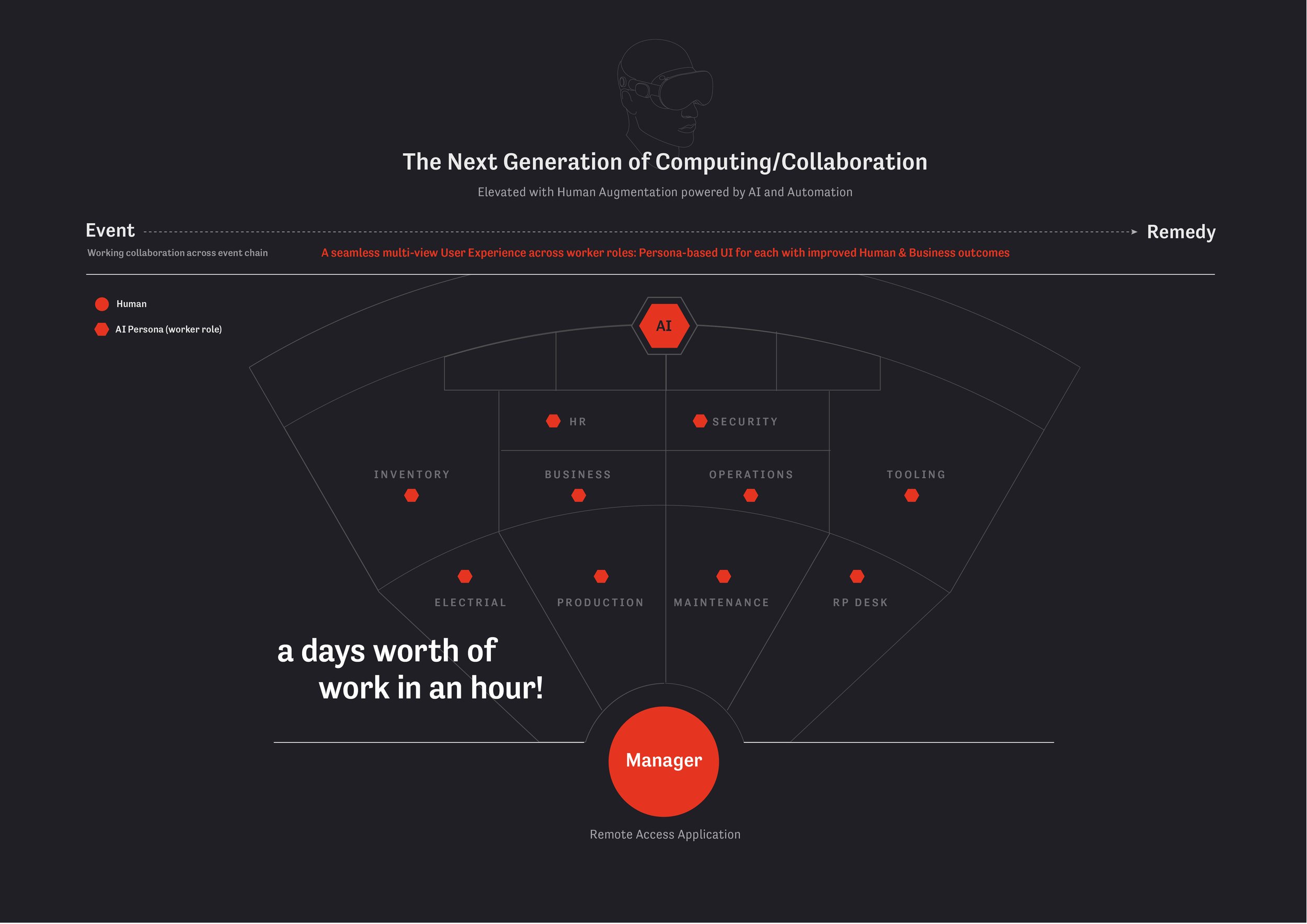We’re Entering a New Era: Multi-Agent Systems Meet Spatial Computing
AX: The Future of Interaction
In the ever-evolving world of design and tech, two transformative forces are quietly gaining traction: multi-agent workflows and spatial computing. On their own, each is a game-changer. But together? They form the foundation of a new paradigm we like to call Agentic Experience (AX)—a dynamic, interconnected approach to interaction where autonomous systems and spatially aware environments work in harmony.
AX isn’t just about building smarter systems; it’s about creating adaptive, responsive environments that work with us in real time. This convergence is redefining how we work, connect, and navigate both physical and digital spaces.
So, why does this matter? Because the way we think about collaboration, problem-solving, and inhabiting digital worlds is shifting. Let’s dive into how AX is shaping the next frontier of experience.
So, What’s the Deal with Multi-Agent Workflows?
Think of multi-agent workflows as a digital symphony. Each agent—whether it’s a bot, a software program, or even a robot—has its own role to play. These agents don’t need a conductor telling them what to do. Instead, they work autonomously, either collaborating or competing to hit the right notes and get the job done.
Picture a fleet of delivery drones. They coordinate with each other, dodge obstacles, and make real-time decisions about the best route. No human micromanagement required. That’s the magic of multi-agent systems: autonomy, adaptability, and the ability to thrive in complexity.
Enter Spatial Computing: The Digital World, Reimagined
Now, layer in spatial computing. This is where the digital world starts to play by the rules of the physical one. With technologies like augmented reality (AR), virtual reality (VR), and IoT, spatial computing gives digital interactions depth and context. It’s what makes an AR overlay of a city map feel intuitive or turns a virtual meeting room into something you’d actually want to spend time in.
It’s not just about making things look cool (although, let’s be real, it does). It’s about making technology feel more human by anchoring it in our real-world experiences.
When These Two Worlds Collide
Here’s where it gets interesting. Multi-agent workflows thrive on complexity. Spatial computing thrives on context. Together, they create systems that are not only smart but also deeply aware of the world they operate in.
Let’s break it down:
1. Immersive Collaboration at Scale
Imagine working on a global design project. You’re not just sharing a screen; you’re standing inside a 3D model of your project, moving pieces around in real time. Your design assistant (an agent) pops in to suggest tweaks based on sustainability guidelines. Meanwhile, another agent runs simulations in the background, flagging potential issues.
Everyone—from Tokyo to Toronto—is on the same page, in the same space. This is more than remote work; it’s collaborative immersion.
2. Revolutionizing Manufacturing with Intelligent Production Lines
In the manufacturing world, efficiency and precision are everything. Enter spatial computing and multi-agent systems, working together to create intelligent, adaptive production lines. Picture a factory floor where autonomous robots (agents) collaborate to assemble products. These agents are spatially aware, navigating complex layouts while adjusting in real-time to unexpected changes, like supply shortages or equipment malfunctions.
With spatial computing providing a 3D view of the entire operation, human supervisors can monitor progress, troubleshoot remotely, or even simulate adjustments before making them. The result? Reduced downtime, optimized workflows, and a seamless blend of human oversight and machine efficiency.
3. Healthcare That Adapts to You
In the operating room of the future, a surgeon isn’t just working with scalpels and sutures—they’ve got an AR headset showing them real-time vitals and a roadmap of the procedure. Multi-agent systems monitor the patient’s condition, predict complications, and adjust the surgeon’s view accordingly.
Post-surgery, the same agents track recovery, providing personalized recommendations based on the patient’s unique context. Healthcare becomes more adaptive, less reactive, and, ultimately, more human.
Why Now? What’s Driving This Convergence?
We’re standing at this intersection because the tools to make it happen are finally here. 5G, edge computing, and advances in AI are enabling real-time, context-rich interactions at scale. Meanwhile, the way we work, shop, and play is shifting toward hybrid experiences that blur the lines between the physical and digital.
But there’s something deeper at play. As technology evolves, so do our expectations. We don’t want to just use systems—we want to collaborate with them. We want tech that understands context, that feels intuitive, and that adapts to our needs in real time. This convergence delivers on that promise.
Challenges Ahead (Because It’s Not All Smooth Sailing)
Let’s not sugarcoat it: this isn’t plug-and-play territory. There are real hurdles to overcome:
Interoperability: Getting different agents, systems, and devices to speak the same language.
Processing Power: Real-time decision-making across distributed systems eats up serious computational resources.
Privacy and Security: With so much context-rich data flying around, protecting user privacy and system integrity is non-negotiable.
The good news? These challenges aren’t insurmountable. They’re design opportunities.
Looking Ahead: A Future That Feels More Human
At Daito, we’re fascinated by the spaces where technology, design, and humanity intersect. Multi-agent workflows and spatial computing aren’t just tech trends—they’re part of a broader shift toward more fluid, responsive, and human-centered systems.
The future isn’t about more screens or more data. It’s about creating systems that understand us, that adapt to our environments, and that help us focus on what really matters.
So, what’s next? We’ll be watching as this convergence reshapes industries, redefines collaboration, and transforms how we engage with the world around us. And we’re excited to help design a future that feels less like work—and more like life.
Curious about how multi-agent systems and spatial computing could transform your industry? Let’s talk.


